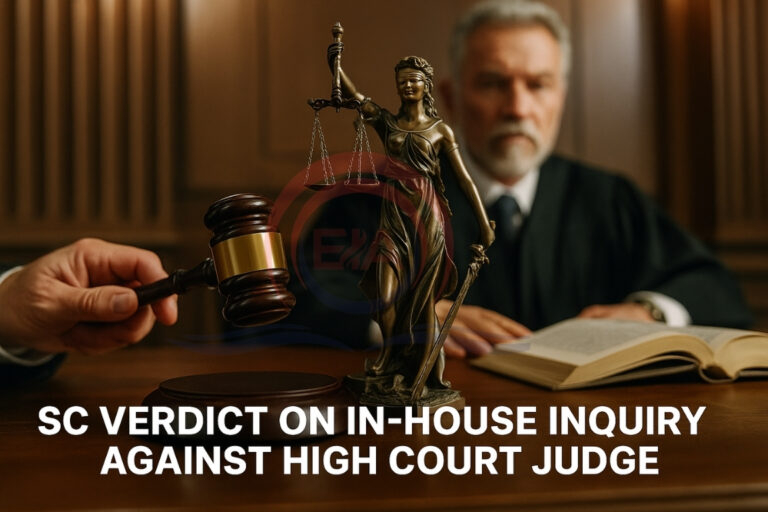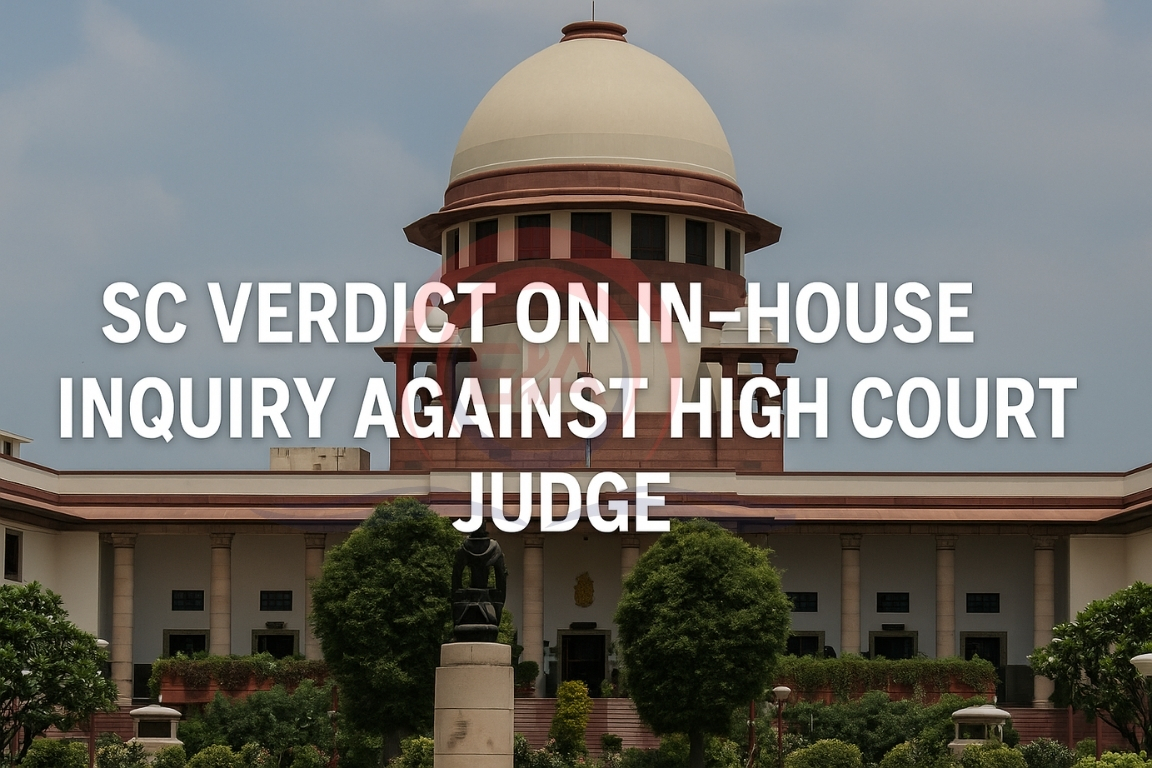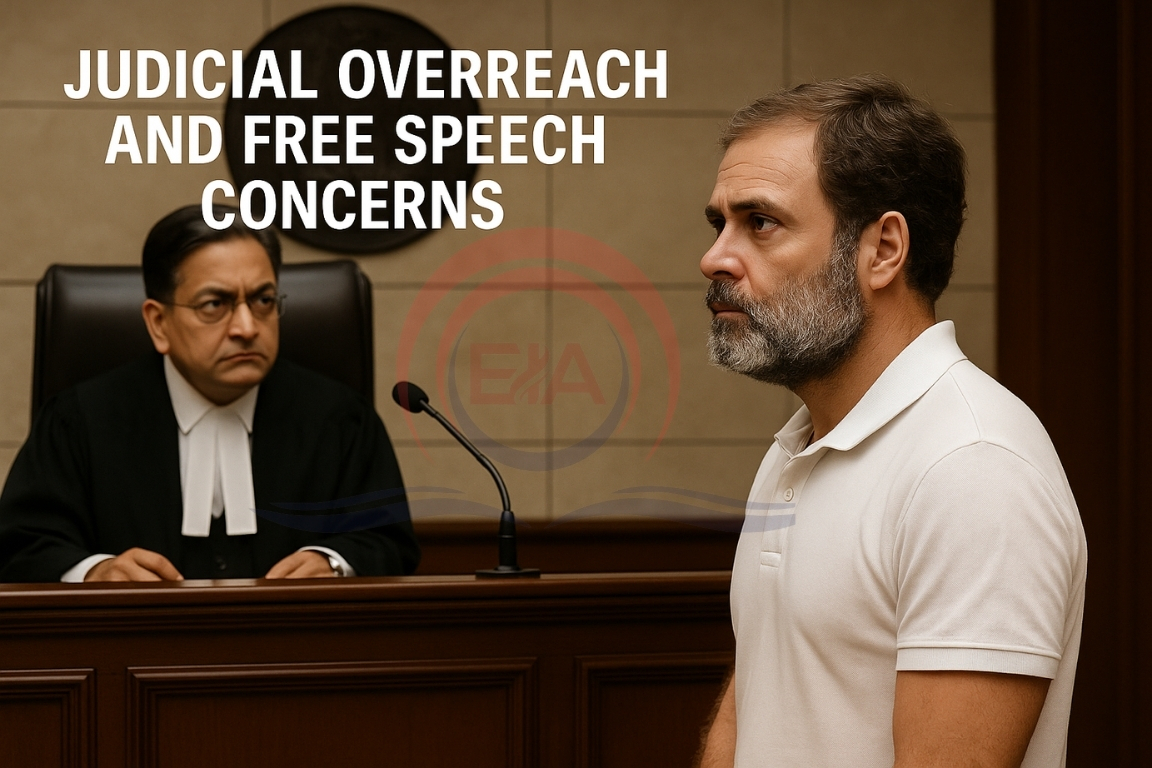The Supreme Court has upheld the legality of the in-house inquiry procedure used to recommend removal of Justice Yashwant Varma of the Allahabad High Court, after burnt currency was found at his residence post a fire. It ruled that such procedures are constitutionally valid and do not interfere with Parliament’s powers.
Background:
- Justice Yashwant Varma of Allahabad High Court faced an internal inquiry after burnt currency sacks were discovered at his house following a fire.
- The in-house inquiry report, initiated by then Chief Justice of India Sanjiv Khanna, recommended his removal.
- Justice Varma challenged this in the Supreme Court, arguing that such a procedure was “extra-constitutional” and violated Parliament’s exclusive role in removing judges.
Legal Validity of In-House Procedure:
- The Court ruled that the in-house procedure has legal backing from earlier SC judgments.
- It is considered “law of the land” under Article 141 of the Constitution (SC judgments are binding).

Parliament’s Power Intact:
- SC clarified that the in-house inquiry does not override Parliament’s authority to remove a judge.
- Even if the report suggests removal, MPs can choose to accept or reject it during impeachment proceedings.
Purpose of In-House Mechanism:
- The procedure acts as a “stitch in time” to uphold the integrity of the judiciary.
- It allows internal checks before triggering formal removal through Parliament.
ABOUT SPECIAL LEAVE PETITION (SLP)
- SLP (Article 136) allows a person to appeal to the Supreme Court against any judgment of a lower court or tribunal.
- It is not a matter of right, but a discretionary power of the SC.
- SC can refuse to entertain the petition without giving any reason.
- Often used in cases involving grave injustice or constitutional matters.
WHAT IS A REVIEW PETITION?
- A Review Petition (Article 137) is filed to request the Supreme Court to review its own judgment.
- Can be filed only when there’s an apparent error or new evidence.
- Heard by the same Bench that passed the original judgment.
- It is not a re-hearing but a limited review of the decision.
Conclusion:
This judgment strengthens the accountability of judges while maintaining Parliament’s authority in judicial removal. The in-house procedure ensures that serious allegations are promptly examined, upholding judicial integrity and public trust.





